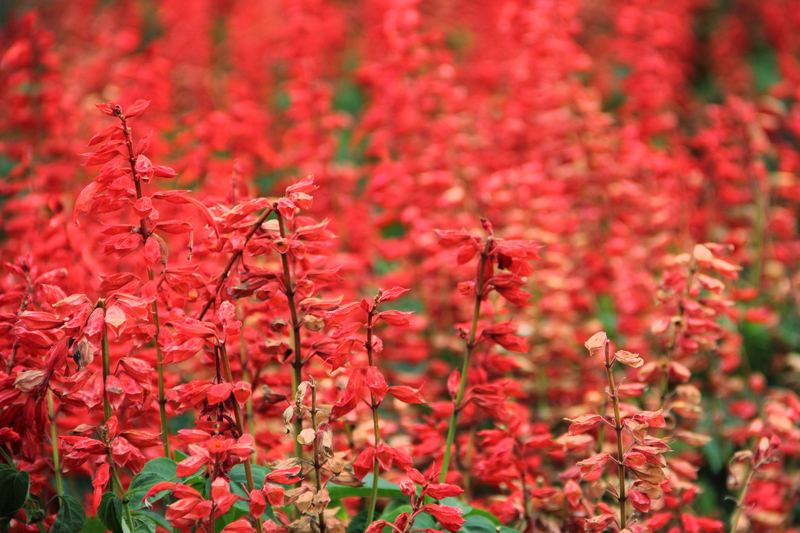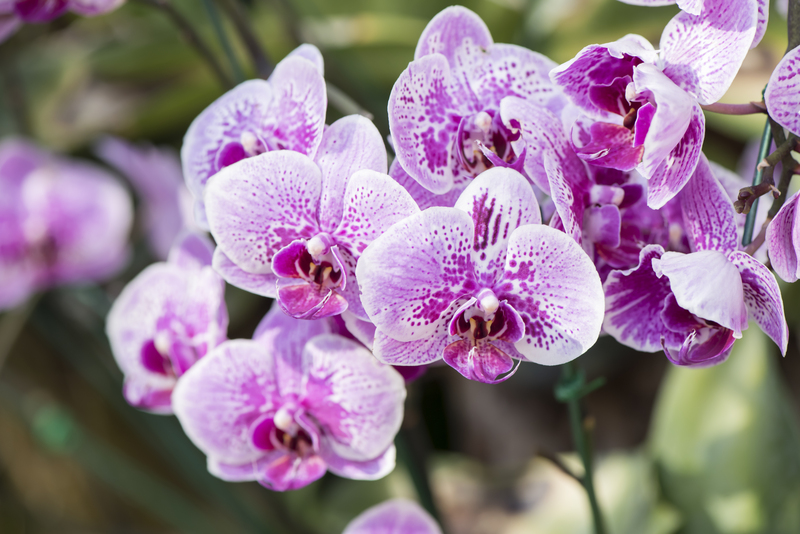Transform Your Landscape with Unique Hedge Trimming Techniques
Posted on 14/09/2025
Transform Your Landscape with Unique Hedge Trimming Techniques
Hedge trimming is both an art and a science that plays a pivotal role in landscape design and garden aesthetics. While basic trimming keeps hedges healthy and neat, unique hedge trimming techniques can completely transform your space, infusing it with personality, elegance, and structure. Whether you are a DIY gardening enthusiast or a professional landscaper, mastering distinctive hedge shaping and sculpting methods is desirable for anyone seeking to make their landscape stand out.
Why Invest in Creative Hedge Trimming?
Traditionally, hedges have been used as boundaries or privacy screens. However, innovative hedge trimming techniques go far beyond simple maintenance. They can:
- Enhance Curb Appeal: Uniquely trimmed hedges draw the eye and improve property value.
- Define Garden Zones: Different shapes and sizes can denote garden areas or lead visitors along walkways.
- Express Artistic Flair: Sculpted hedges act as living art, adding whimsy or sophistication.
- Promote Plant Health: Specialized trimming techniques can encourage denser growth and reduce disease.
Incorporating creative hedge cutting techniques is a fantastic way to add an individual touch to your outdoor space.

Understanding the Basics: Essential Hedge Trimming Tools
Before exploring the various unique hedge trimming techniques, it is crucial to have the right tools. A well-equipped gardener's shed may include:
- Manual Hedge Shears: Ideal for precision shaping and smaller hedges.
- Electric or Gas Trimmers: Helpful for larger, more robust hedges and ensuring even cuts.
- Loppers and Pruners: For thicker branches and fine detail work.
- Topiary Frames: Wire forms to help guide exact shapes and advanced designs.
- String or Stakes: Essential for straight lines and uniformity.
Quality tools help achieve clean cuts, variable shapes, and fine details essential in artistic trimming.
Unique Hedge Trimming Techniques to Elevate Your Garden
1. Topiary Art: Sculptural Hedge Design
Topiary is perhaps the most delightful expression of creative hedge trimming. This technique involves pruning shrubs and hedges into defined shapes such as geometric forms, animals, spirals, and abstract sculptures.
- Classic Geometrics: Spheres, cubes, and cones lend a formal, structured elegance to any garden.
- Animal and Figure Shapes: Perfect for whimsical or themed gardens; bring in wire frames to guide growth.
- Spirals and Waves: Create dynamic movement and eye-catching focal points along walkways and entrances.
Topiary embodies precision and patience. Regular clipping and framework guidance result in stunning living artwork that evolves with each season.
2. Cloud Pruning for a Zen Garden Aesthetic
Also known as Niwaki in Japanese gardening, cloud pruning involves sculpting hedges and shrubs into soft, rounded shapes designed to evoke the illusion of floating clouds. This style is synonymous with tranquility and is ideal for:
- Creating harmonious, peaceful landscapes.
- Emphasizing negative space for a minimalist feel.
- Pairing with water features and contemplative garden spaces.
Start by thinning the shrub, then shape clusters of foliage into carefully rounded pads. Retouch annually for best results.
3. Living Fences: Vertical and Pattern Trimming
Turn your boundary hedge into a visual statement by employing patterned cuts and unique vertical shapes. Consider:
- Wave Patterns: Give the illusion of gentle movement across the length of your border.
- Stepped Edges or Staggered Heights: Break up monotony and add architectural interest.
- Peaked or Arched Tops: Create gateways or frame garden entrances elegantly.
This unique hedge cutting technique is practical and beautiful, defining zones while offering privacy.
4. Tapestry Hedges: Mixed Species and Colors
Why limit yourself to a single species? With careful planning and advanced trimming, you can weave together different hedge plants for a stunning effect:
- Combine evergreens and deciduous species for seasonal interest.
- Mingle colors and textures for a vibrant, eye-catching border.
- Use contrasting foliage to create striking horizontal or vertical bands.
Careful, selective trimming maintains each species' distinct characteristics while forming a cohesive, living tapestry.
5. Formal Versus Informal Hedge Designs
While highly controlled, crisp lines define formal designs, informal approaches favor organic curves and soft silhouettes:
- Formal Techniques: Use string lines and measuring sticks for symmetry and perfect right angles.
- Informal Techniques: Allow gentle variation and flowing outlines, using eye judgment over rigid guides.
- Mixed Forms: Combine both methods for eclectic, modern landscaping.
Blending these unique hedge trimming techniques brings character and depth to your garden's overall design.
Expert Tips for Successful Unique Hedge Trimming
Timing is Everything
- Trim most hedges in late winter or early spring before new growth starts.
- Avoid heavy cutting in late autumn to prevent frost damage.
- Regular light pruning encourages denser, more compact growth.
Know Your Plants
Some hedges tolerate severe pruning (like boxwood or privet), while others prefer gentle shaping (like yew or laurel). Study the growth patterns and requirements of your hedging plants for optimal results.
Shape from Bottom to Top
Trim lower branches slightly wider than the top, ensuring sunlight reaches all parts of the hedge. This unique hedge shaping technique helps maintain density at the base, preventing bare patches.
Sharpen and Clean Tools Regularly
Sharp blades ensure precision cuts and reduce plant stress, while clean tools prevent the spread of disease.
Step Back and Check Your Progress
Periodically step away from your hedge to observe its shape from different angles. This habit ensures symmetry and allows for corrective action during the process.
Frequently Asked Questions about Artistic Hedge Trimming
What hedge species are best for unique shapes?
Boxwood, yew, privet, holly, and some types of laurel and ficus are highly responsive to detailed shaping and repeated trimming. Choose dense, small-leaved shrubs for best results.
How often should hedges be trimmed for artistic designs?
Begin with light, formative pruning as the plant matures. Mature designs generally require touch-ups every four to six weeks during the growing season to maintain shape and density.
Do I need special training for advanced hedge sculpture?
Patience, practice, and a willingness to experiment are key. Professional landscape designers may use 3D software or topiary templates, but many concepts can be learned through hands-on experience and online tutorials.
Can I restore an overgrown hedge with unique trimming techniques?
Yes. Rejuvenation pruning can revive old hedges, though it may take one or more seasons to develop detailed shapes. Remove diseased or dead branches first, then initiate shaping steps.
Creative Ideas for Transforming Your Landscape
- Garden Mazes: Use low, intricately trimmed hedges for fun, interactive garden features.
- Seasonal Themes: Shape hedges for holidays or events, such as heart shapes for weddings or stars for festive occasions.
- Privacy Screens: Offset various hedge heights or incorporate lattice-topped sections for both privacy and design drama.
- Entry Arches and Living Tunnels: Train hedges over frames for pathways, welcoming visitors with unique green gateways.

Maintenance and Longevity of Artistic Hedges
Regular care ensures your creatively trimmed hedges remain healthy and beautiful. This means:
- Watering according to species needs, especially after shaping sessions.
- Feeding with balanced fertilizer to promote lush regrowth.
- Monitoring for pests or disease, promptly removing affected growth.
- Mulching at the base to retain moisture and suppress weeds.
With the right care, your one-of-a-kind hedge designs will become a lasting highlight in your landscape.
Conclusion: Let Your Landscape Speak with Unique Hedge Trimming Techniques
Transforming your landscape with unique hedge trimming techniques offers endless possibilities for creativity, functionality, and self-expression. From traditional topiary art and zen-inspired cloud pruning to vibrant tapestry hedges and dynamic living fences, there is a design for every taste and setting.
Embracing these innovative methods will not only set your property apart but also foster a deeper connection with nature and artistry. Start small, experiment boldly, and watch as your garden transforms into a living masterpiece.
Unleash your imagination, master the unique art of hedge shaping, and let your landscape flourish in style!

